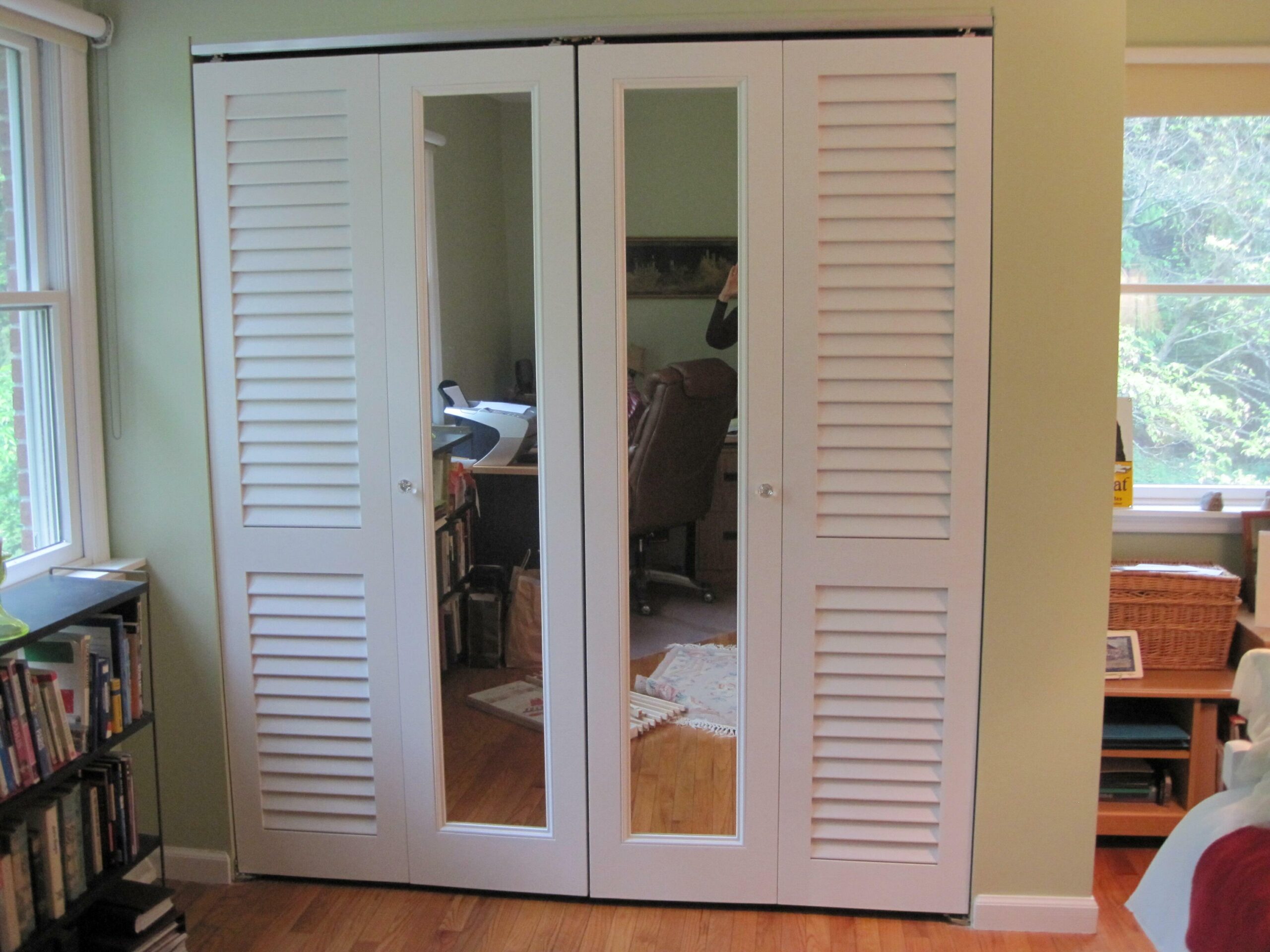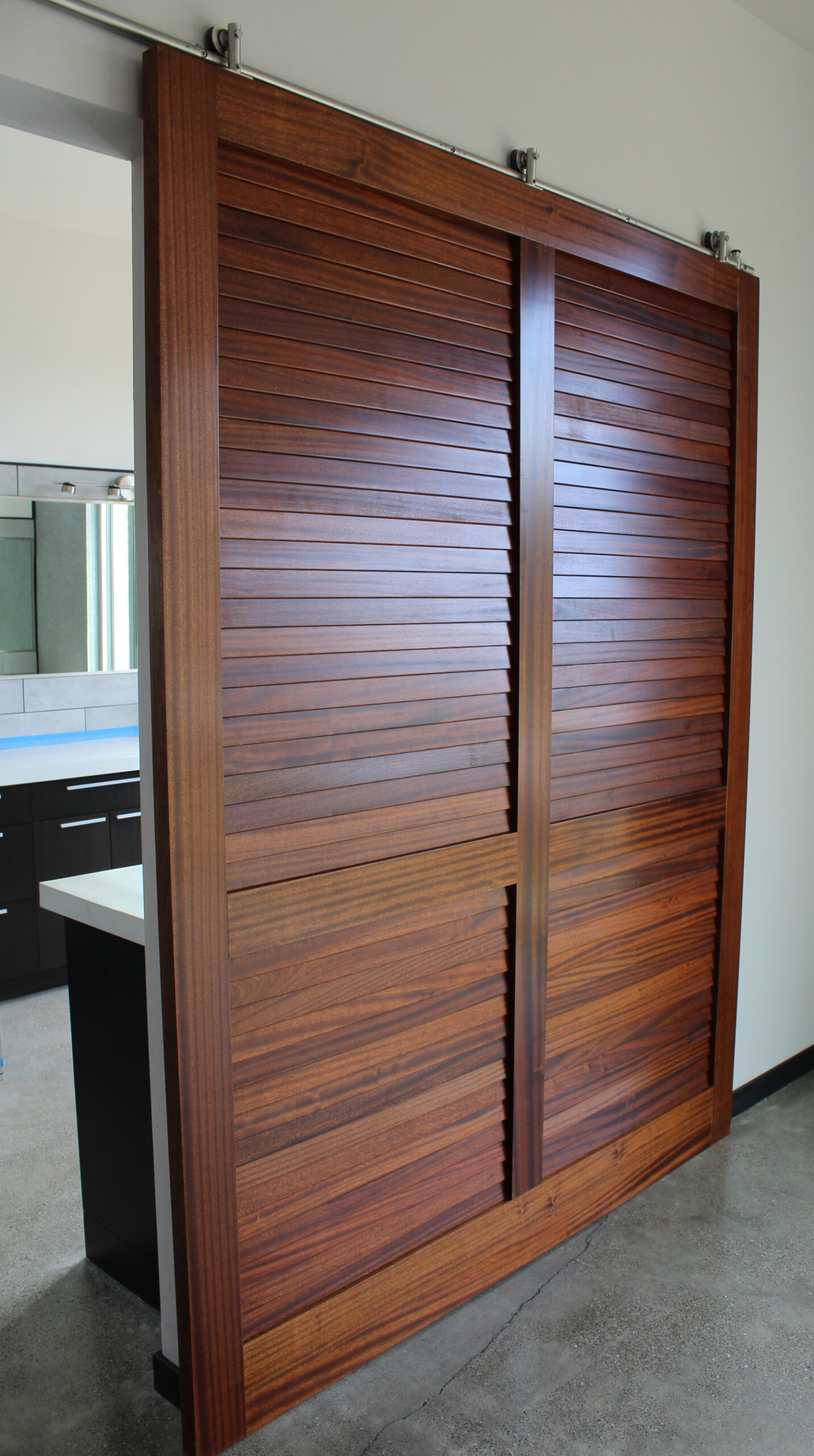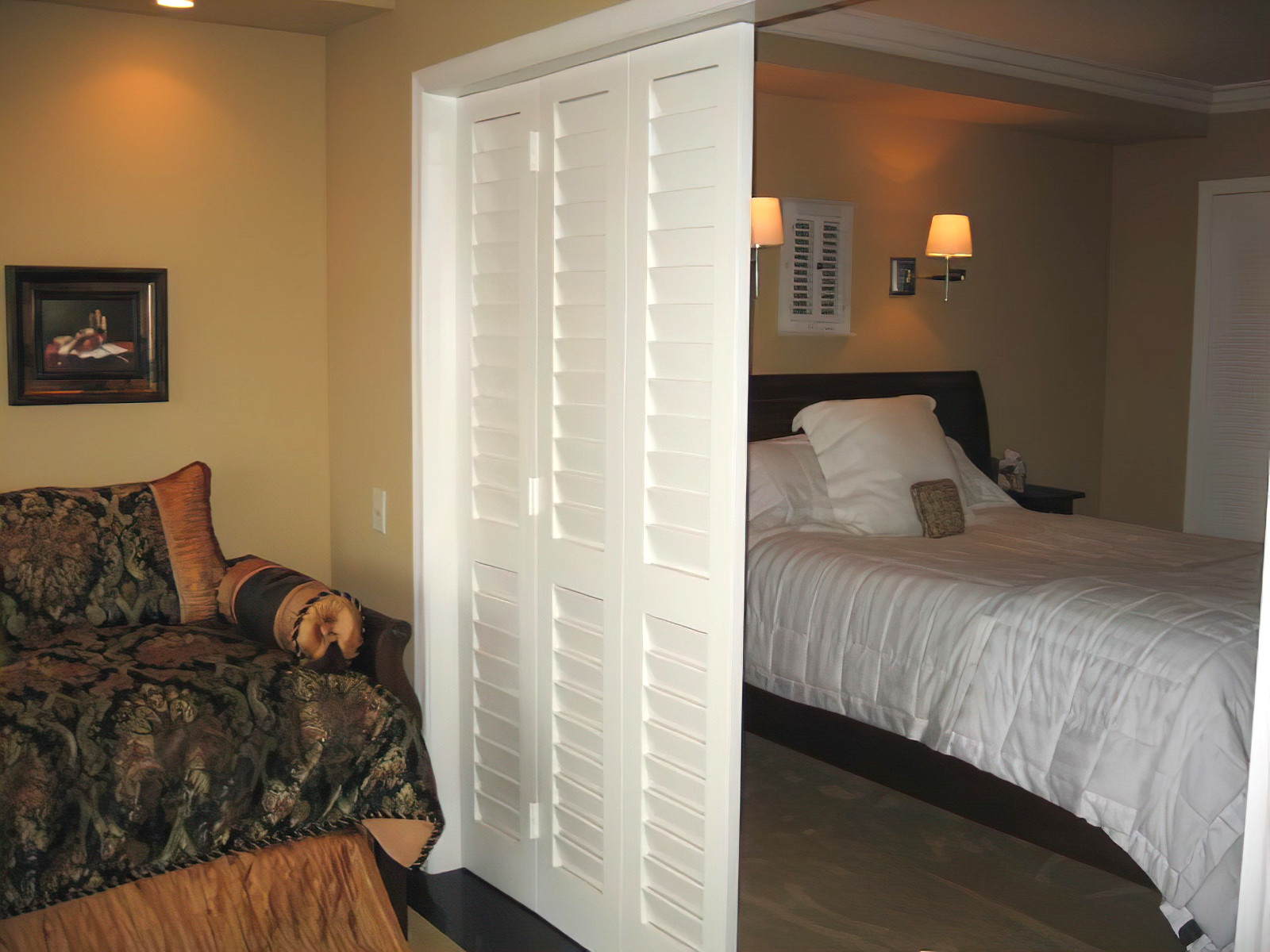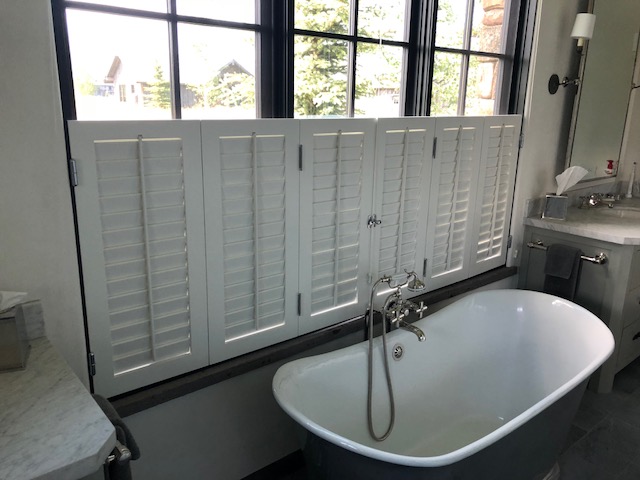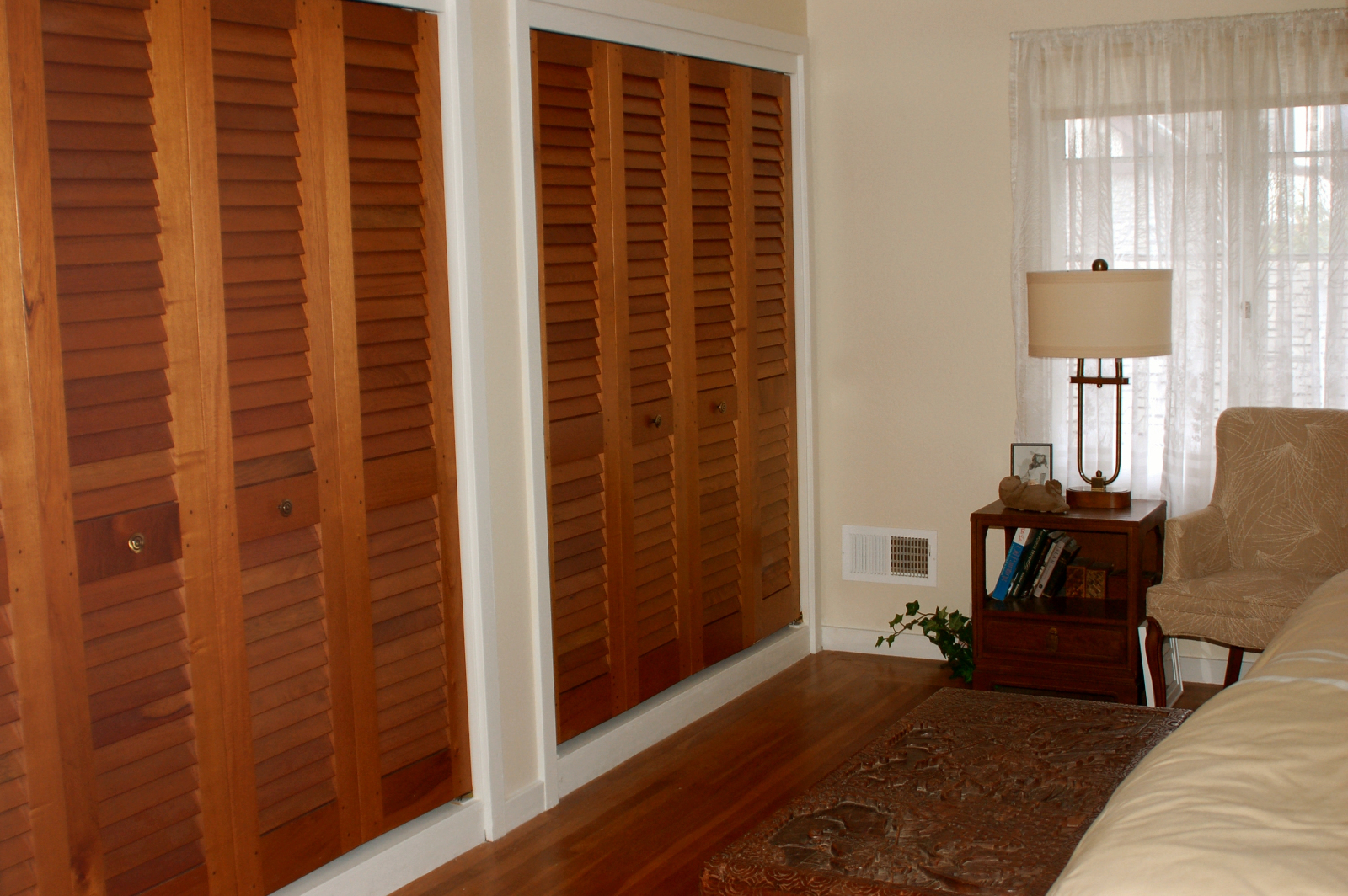At Kestrel Shutters & Doors, we take pride in our ability to create custom shutters that not only meet but exceed the expectations of our customers. While we offer a wide array of standard designs, we understand that some projects require something extra. Whether you’re restoring a historic building or working on a modern project, …
Interior Doors
Kestrel Interior Doors
Can I Use 2 Different Styles of Closet Doors Together?
Can I Use 2 Different Styles of Closet Doors Together? Simply put…Yes. While we make doors that are a combination of different styles ( louvers over panels, mirrored over bead board, operable louvers over fixed louvers and more ) you can also use different types of doors in the same opening. Reasons for Mixing and …
What Are Faux Louvered Doors?
What Are Faux Louvered Doors? With fixed louvered doors the louver blades are fixed at an angle and spaced far enough apart so that there is a gap. This is so they provide privacy while still allowing airflow. With Faux lovered doors the louver blades are shaped like a chevron and stacked. This gives you …
What are the differences between Interior Doors and Closet Doors?
What are the differences between Interior Doors and Closet Doors? We often receive emails and phone calls asking us which doors can be used as closet doors and which can be used for interior doors between rooms. Many people are concerned that there may be some reason why the same door should not be used …
Using Wood Shutters and Doors in a Bathroom
Using Wood Shutters and Doors in a Bathroom When it comes to using wood shutters and doors in a bathroom there are a few things that you need to consider; privacy, ventilation and humidity. Privacy Privacy in a bathroom is obviously important to many people. Most styles of doors or shutters will offer some degree …
What If My Closet Openings Are Not Square?
Closet & Door Openings Not Square It is not uncommon to have the openings for interior doors or closet doors be out of square. The reasons could be anything from the house settling to an uneven floor to stud walls and header being twisted. The good news is that in most cases it is easy …

